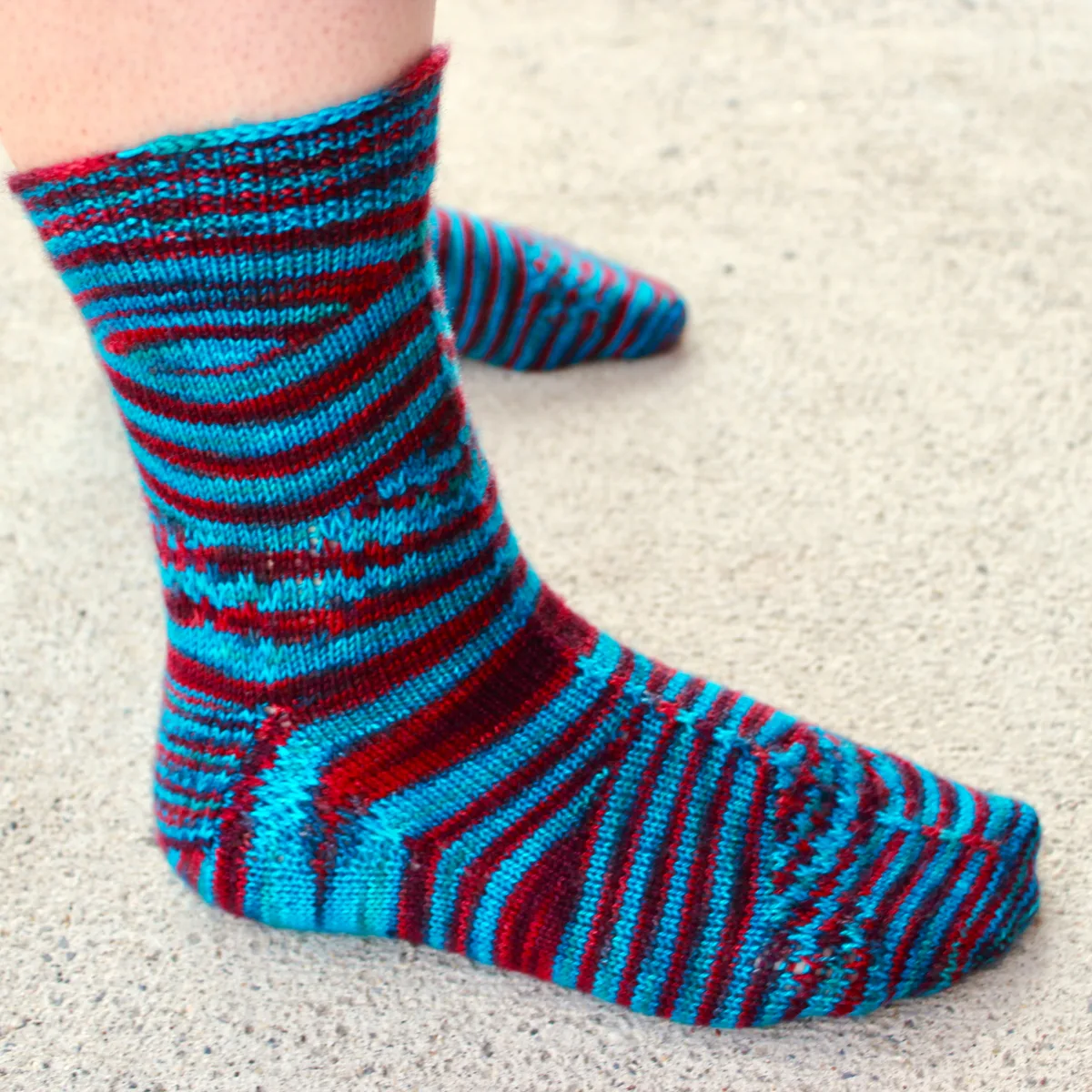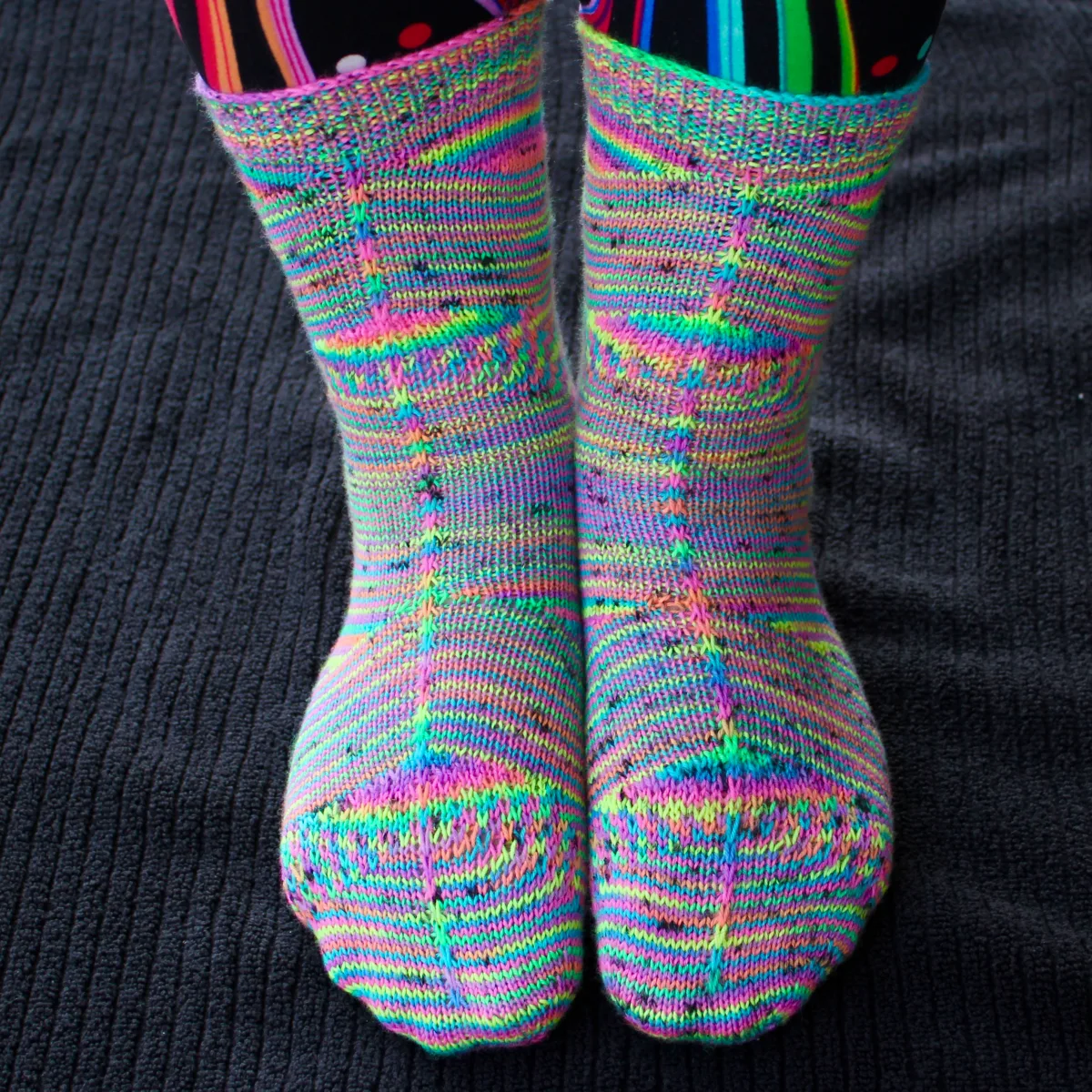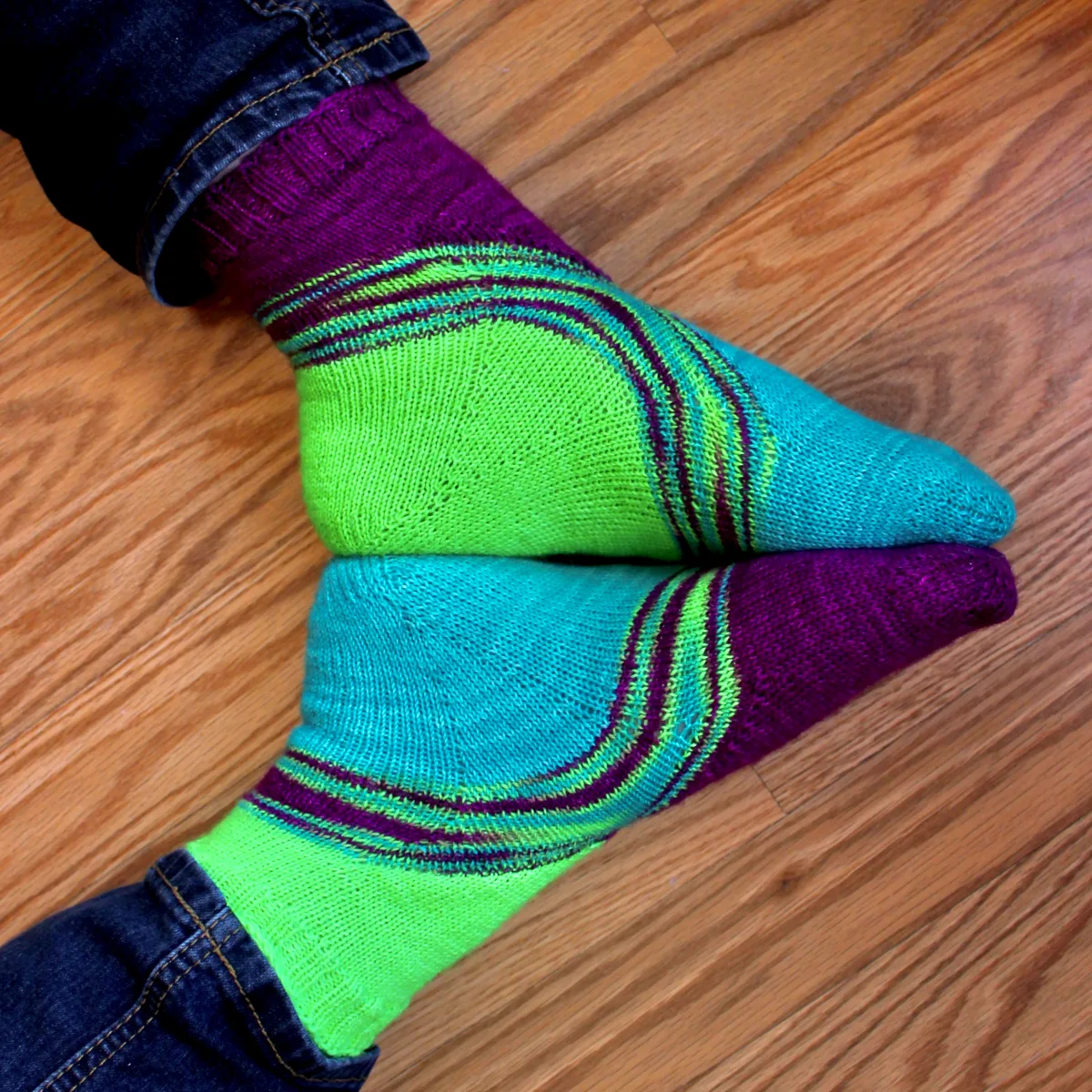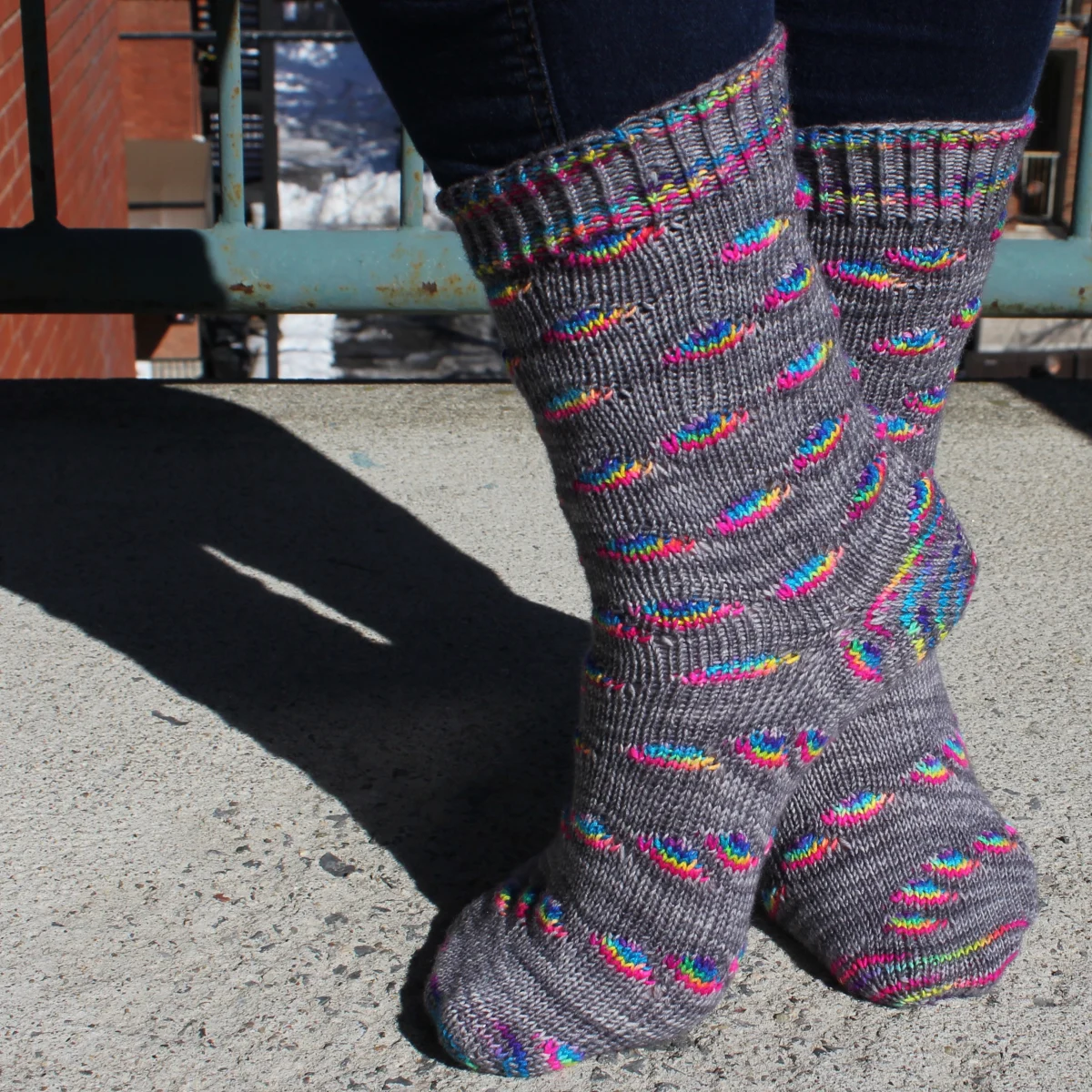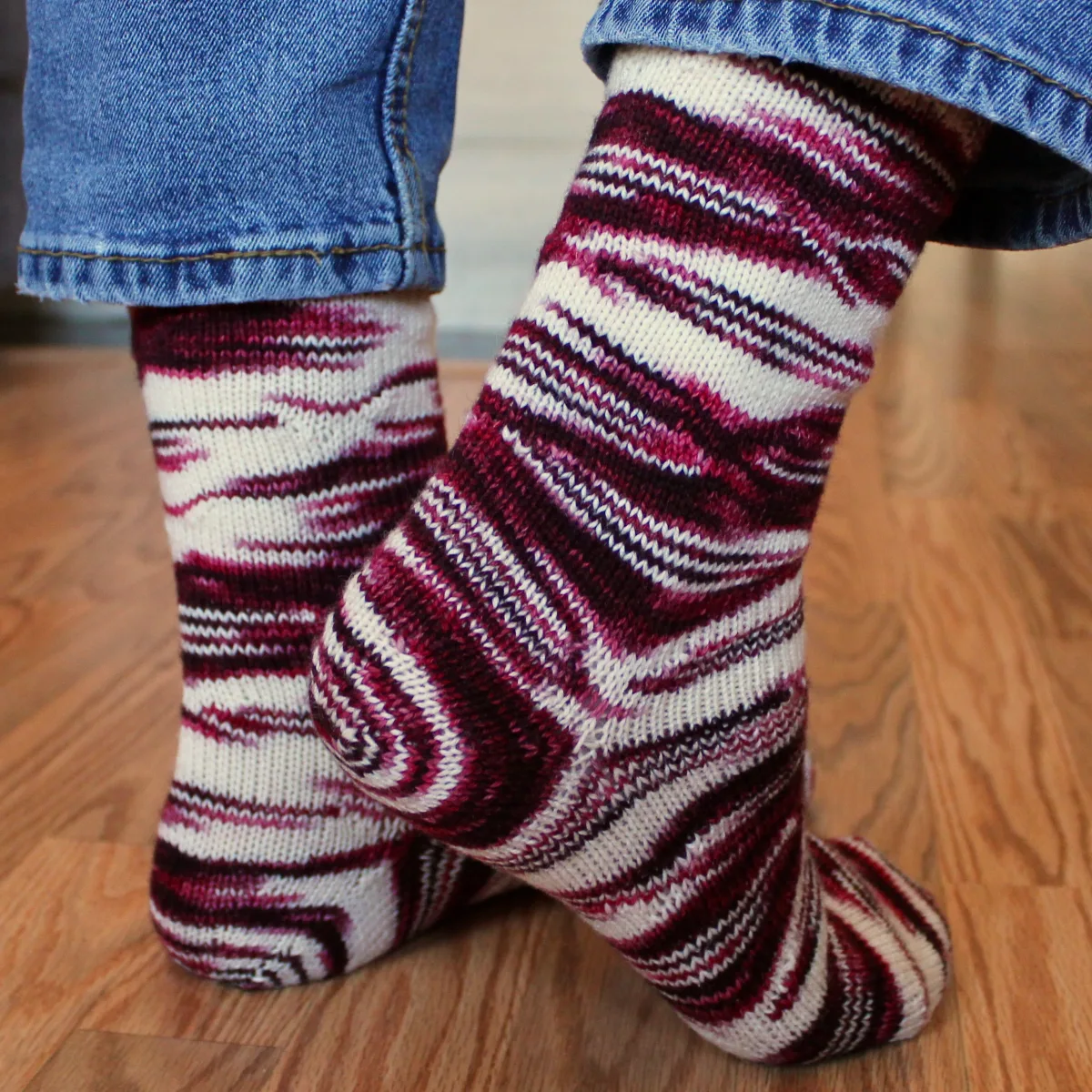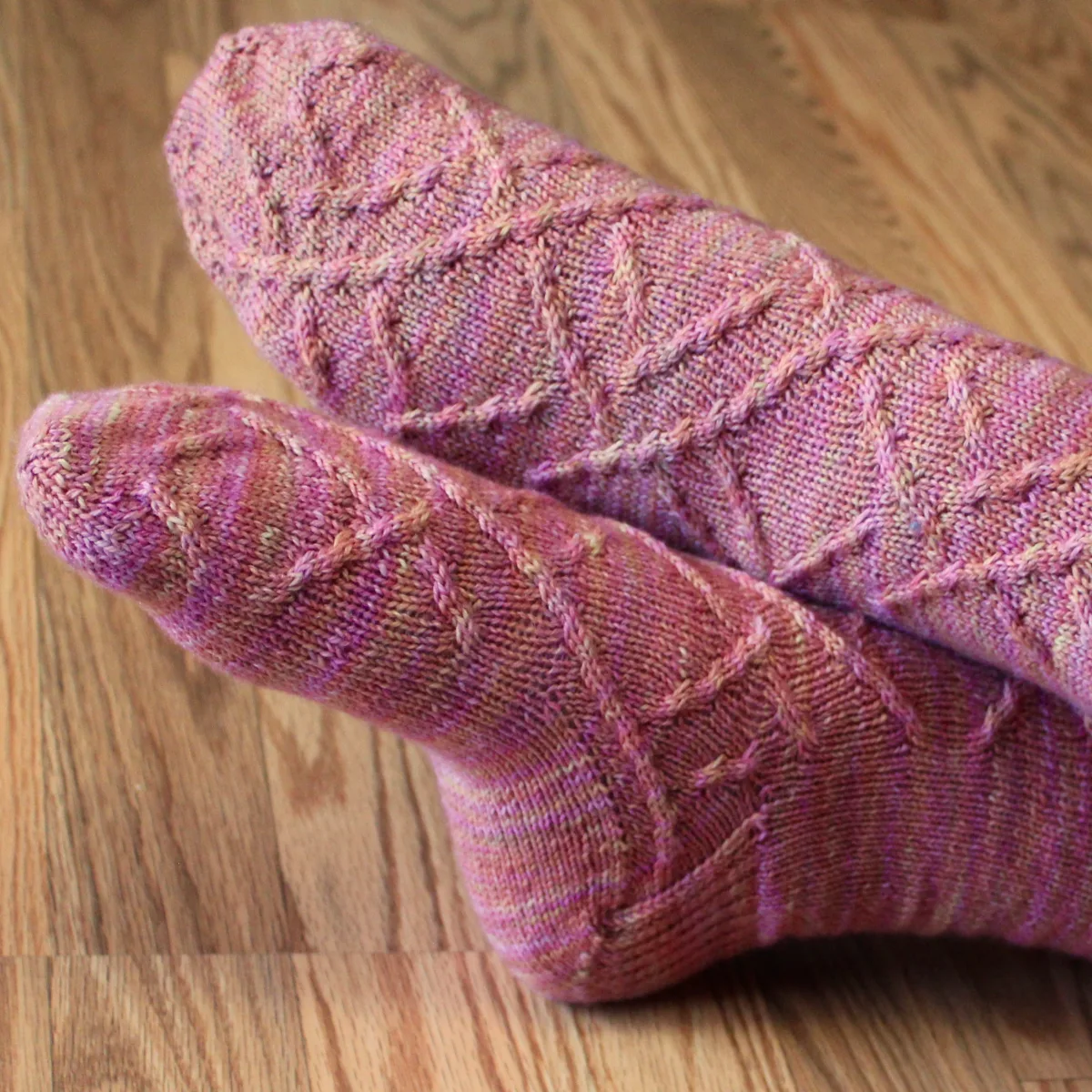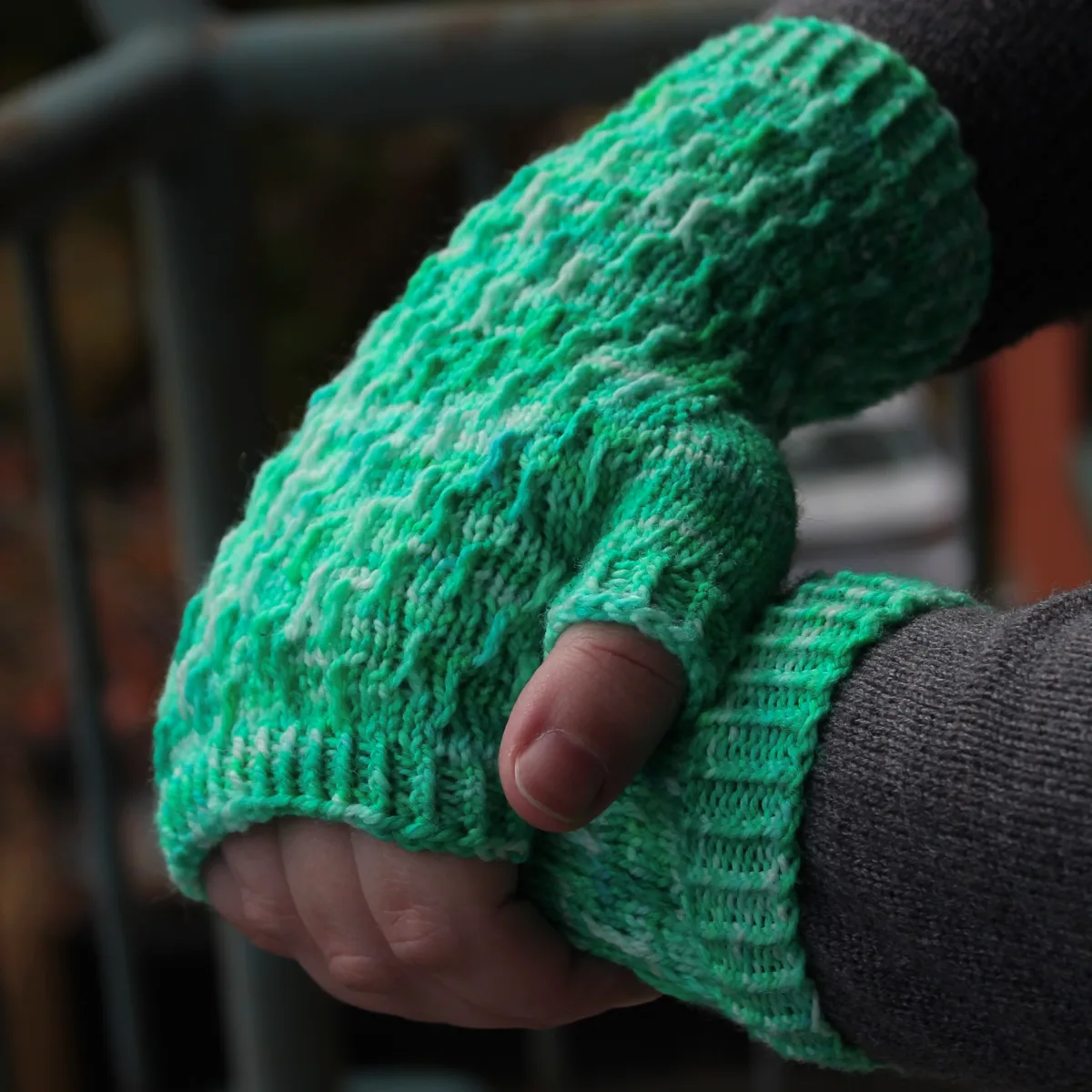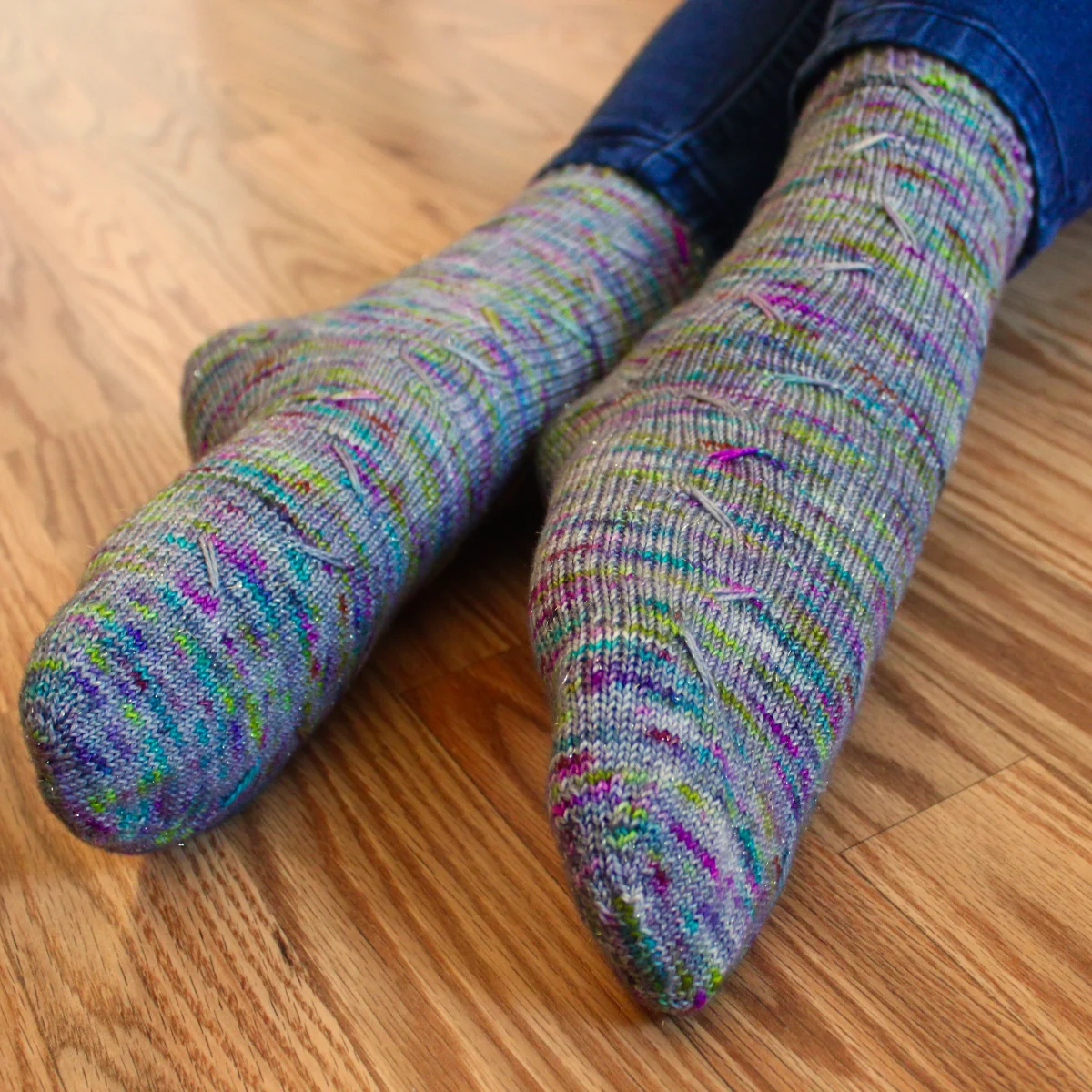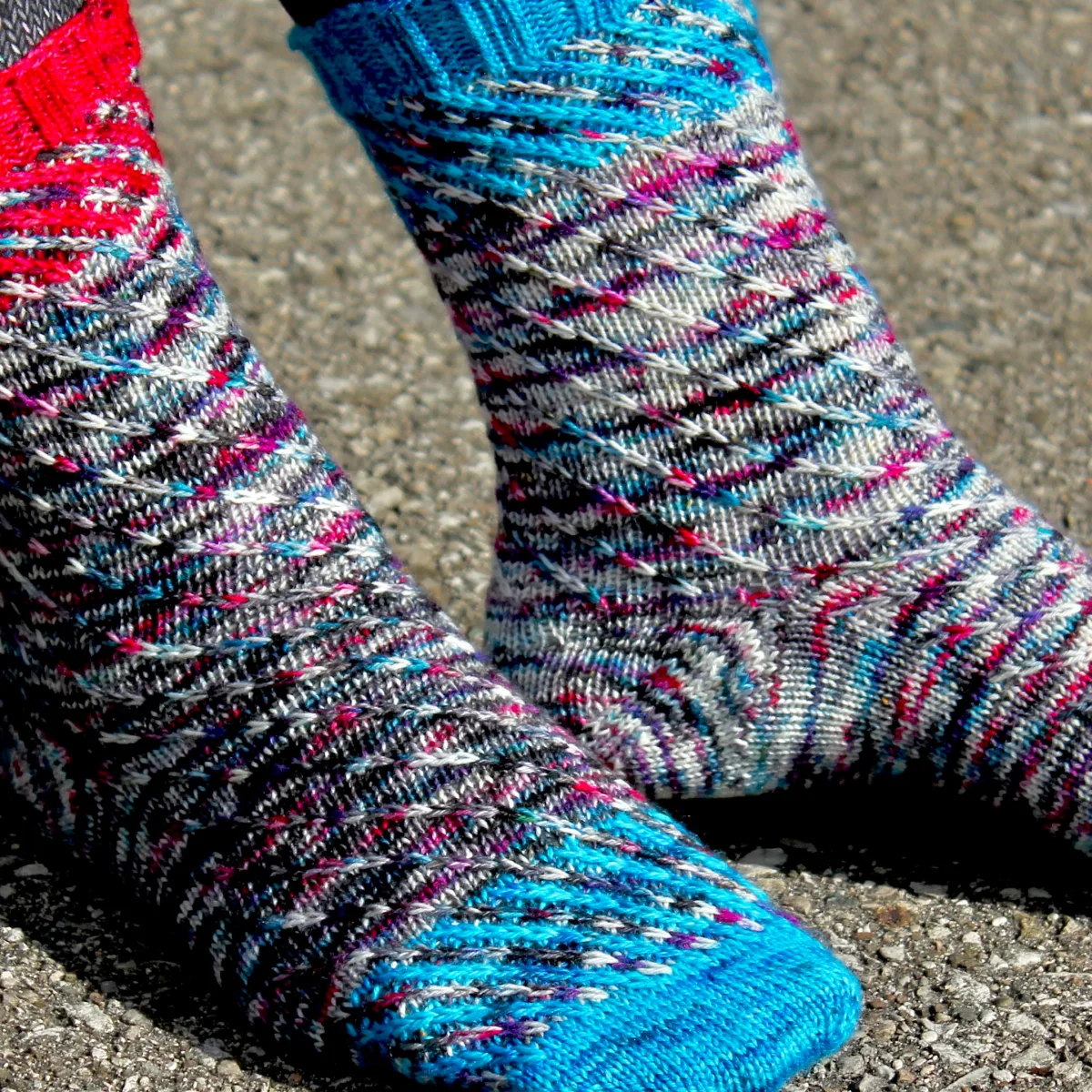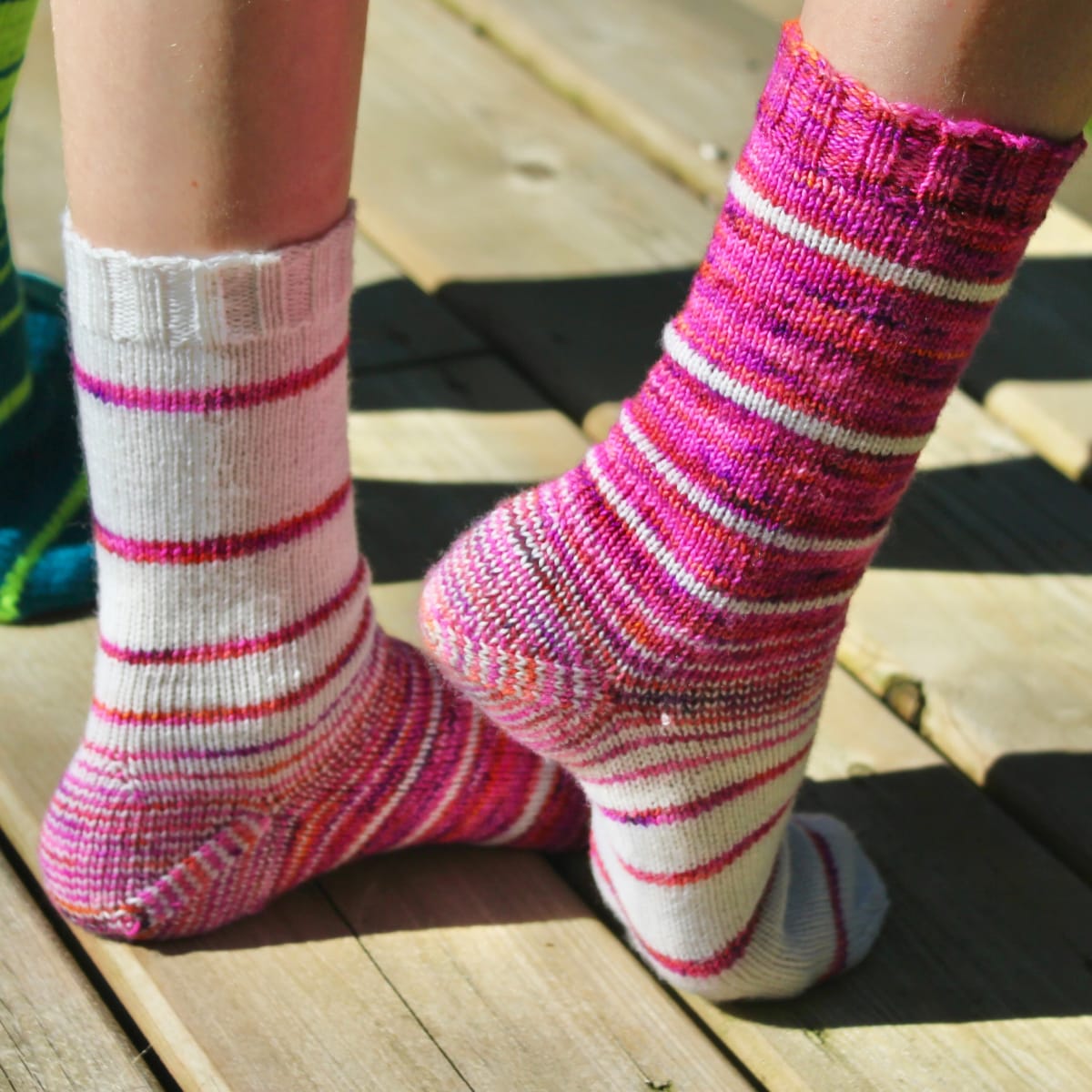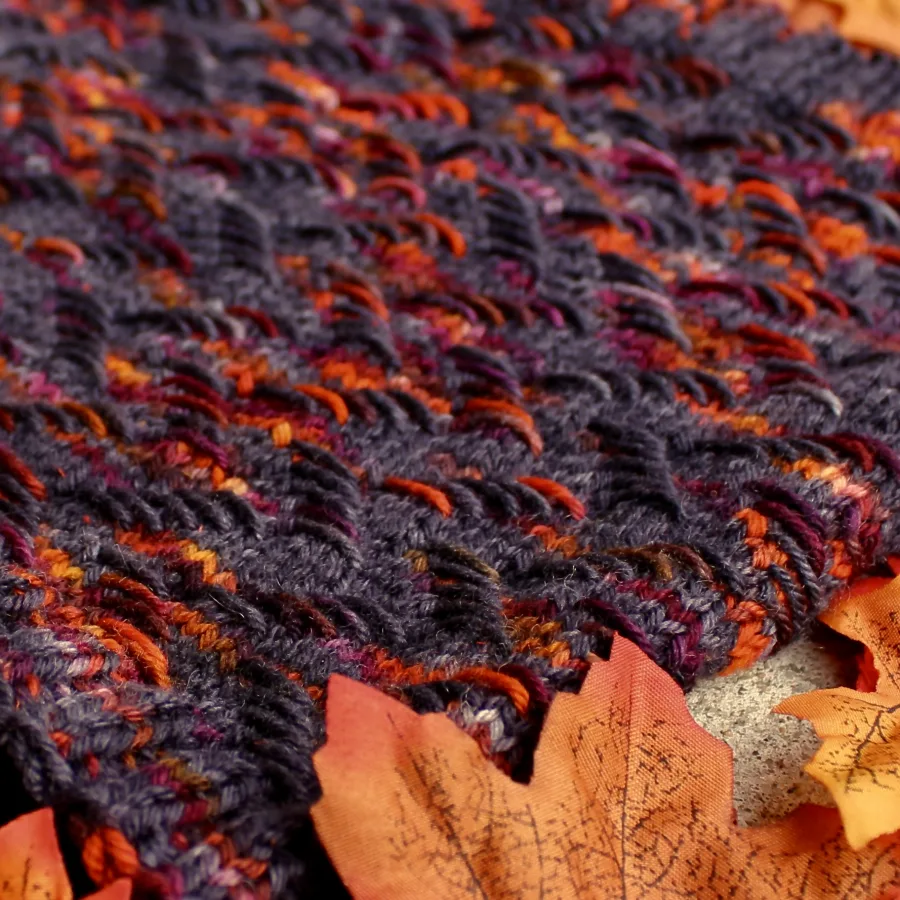How To Choose The Right Patterns For The Wildest Yarns In Your Stash
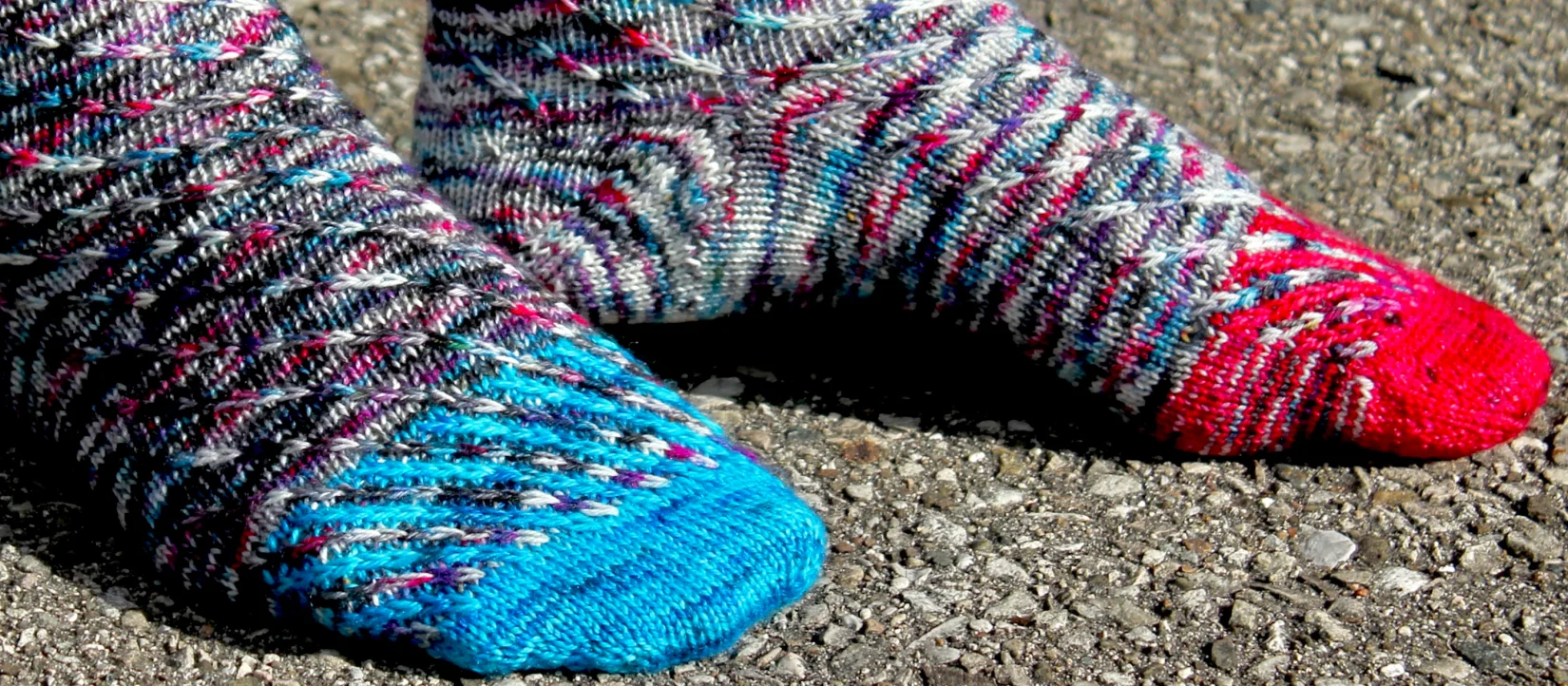
It's the impulse-yarn-buyer's dilemma — what to do with that gorgeous skein whose beautiful colours dazzled you into buying it, but are now overwhelming you every time you try to knit with it? Don't be discouraged! You can find a great use for that yarn that will make you happy with the finished product, whether you are excited to embrace the wildness — or you're hoping to tone it down. Read on to find out some strategies for any wild yarn in your stash!
Patterns For Yarns That Pool
Many multicoloured hand-dyed yarns (and lots of commercially-dyed variegated yarns, too) are dyed with different colours in sections, which means that as you knit with it, you'll get (roughly) the same number of stitches of each colour in a repeating pattern, over and over again. This can create emergent patterns in knitting projects where the rows or rounds are the same length for a while with visually obvious blobs, vertical lines, or even stripes of colours, depending on how many stitches you're working in every row/round. This is called "pooling" or "flashing", and it can be a very polarizing aesthetic! Some people love it, and some people despise it. This section is all about strategies to put you in control of that pooling, and about choosing patterns where the pooling won't obscure the details you are hoping to show off in your finished product.
How do you know if a yarn will pool? The only way to be sure is to swatch (cue groans!), but most of the time you might be able to guess that it will before you start using it. Most hand-dyed yarns and some commercially-dyed yarns come in a hank (that fancy-looking, twisty thing that opens up into a circle that you wind it from), and if you open up the hank and the circle is dyed in sections that go all the way through the "doughnut" of yarn (so, the inside sections are the same as the outside sections), it's almost certainly going to pool. How, exactly, it's going to pool (vertical sections versus "puddles" versus stripes, and so on) will depend on how long your rows/rounds are compared to how big the sections of colour in the hank are, and that is very difficult to predict, since it's affected not just by number of stitches and gauge, but also by subtle changes in tension. But you can get some idea of what pooling possibilities there are for a particular skein if you know what to look for.
In general, the width of a section of colour is in the open hank will give you an idea of how many stitches of that colour you're going to get each time you reach that part of the repeating dye pattern. If there are enough stitches in a given colour section to complete one or more full rows/rounds in your project before the yarn switches to the next colour, you can get something that looks like stripes (sometimes this is called "micro-striping yarn" by dyers). A very small-width project, like a toy, a narrow scarf, a finger on a glove, or the heel flap on a sock, is very often going to pool in this way, though larger projects like the main body of socks or mittens can sometimes do this too, if the sections of colour in the yarn are long enough. On the other hand, if the sections of colour don't have enough stitches for a full row/round of your project, the results get unpredictable. If the sections of colour stack on top of each other, you can get vertical lines (some people do this "planned pooling" style of project on purpose by selecting a number of stitches that works for the yarn they're using), or diagonal lines, or something that still kind of looks like stripes, but in a more complex repeating pattern of different colours. If the number of stitches in your project is changing over time (say, working shaping on a sweater or shawl), that adds more chaos to the pooling.
Another dimension of pooling is how severe the differences in colour are in the yarn. Pooling is going to be more distinct and obvious if the colours are very different from each other, and especially if there is a big difference in lightness (say, black plus fuschia), and more subtle if the colours are similar in lightness (say, light grey plus baby pink). Not invisible, mind you; the pooling will still happen. But it will be less distracting in the finished product if the contrast between colours is less intense.
You can see in the photos above that even when making the same pattern in the same size, that two different pooling yarns can behave completely differently. The blue and red sample was two long sections of colour with high contrast (lighter blue and darker red) and it mostly produced stripes, and where the number of stitches changed across the gussets, it made a wide pool where for several rounds the colours split with mostly red on the instep and mostly blue on the sole. Short-row sections look subtle in this version; they only push the stripes around and make single-colour blobs in some places that don't stand out very obviously. The rainbow sample, on the other hand, had many short sections of colour in the hank, all of which were a similar lightness, so the light/dark contrast was much lower. This made a surprisingly blended and subtle striping effect over most of the sock body that (despite the neon palette) was more muted, and the short-row sections made clear rainbows that stand out. You can also see the spine of slipped stitches better in this sample, because the several-rounds-deep colour pooling in the blue and red sample camouflages them, but the rainbow yarn doesn't pool vertically almost at all, so the different colours of slipped stitches stand out over each other.
While it is predictable that the colourway with two larger sections would be more likely to stripe than the rainbow colourway, it turns out that they both stripe, just in different ways. And while the rainbow colourway had more colours, it ends up looking less extreme than you might think, and the more subtle parts of the patterning are more visible, because of the lower contrast between colours. Neither of the pooling yarns stacked colours on top of each other to make columns or diagonal lines. But you can see some indication from the different pooling over the gusset shaping that they both could have done that, if the number of stitches, or the needle size, or the knitting tension had been just slightly different. You can predict that a yarn is likely to pool, but how intense it will be and what that pooling will look like, exactly, is not easy to predict at all.
Once you know that your yarn will pool, what do you do? Essentially, you have three options: let it do its thing, bend the pooling to your will, or try to break it up. Let's talk about strategies to find patterns that will help you do each of these things, and also some characteristics of patterns that just don't work well with pooling yarns and are better-suited to other dye styles.
Option One: Embrace The Pool!
If you're happy to let the yarn be itself, and create whatever pooling patterns it wants to make, your best bet is to choose a pattern that is relatively plain, with large sections of consistent-length rows/rounds. Scarves, cowls, vanilla socks (particularly with either afterthought heels or short-row heels), and plain hats all fit into this category. If you don't mind a lot of plain knitting with no significant design details, this will give you something that lets the yarn take the lead.
If you want to show off the yarn, but you also want a little bit of patterning to keep things interesting, there are a couple of good options to try. One is bias patterning, such as a scarf where you increase on one end of the row and decrease on the other end of the row, in every RS row. This angles your work on a diagonal, which adds a little bit of flair to the project without changing the overall stitch count in each row and disrupting the pooling patterns. The other is adding a second colour (ideally a more solid colour) and working in wide stripes, which can give the pooling patterns an interesting contrast.
Option Two: Make It Pool Your Way!
If you're okay with pooling, but you want to have some control over how it goes, there are some really interesting options out there for you. The best one is short-row sections that you work only when the "right" colour (or sequence of colours) comes up in the repeating sequence. This lets you take a section of the strand of yarn that is too short for a full row/round and create a row-within-a-row/round that is short enough to let it pool. Sometimes called "assigned pooling", this technique is great for yarns that have a lot of one colour, and just a small section of a special colour (or group of colours, such as a rainbow). It makes little "blobs" that stand out, and you have control over when you let that contrast section be a line of knitting, and when you turn it into a short-row blob.
You can also choose a pattern that uses wider short rows to alter the yarn's pooling pattern to be different from what it would be if the project were plain. This means accepting what the yarn naturally does, to some extent, but you're still making the decision to push it into a different pooling pattern that you might like better.
Option Three: Make That Pool Go Away!
What if you hate the pooling and you just want your yarn colours to blend in a random-looking way? There are a few options for this, though how completely you're going to be able to conceal the fact that your yarn has a repeating colour pattern is not entirely predictable. The more high-contrast your colours are, the harder it will be to avoid getting some kind of visible colour patterning.
The simplest solution to try is alternating skeins. This is a technique often recommended by dyers to avoid obvious lines where you've changed skeins in a larger project like a sweater. But working in either helical stripes (in the round) or in two-row stripes (working flat) from two different skeins or from both ends of the same skein of yarn can help break up pooling, too. This is most effective with more subtle multicoloured yarns; high-contrast yarns sometimes just develop different pooling patterns in each section when you do this, which may not really help with what you're looking for.
You can also choose a pattern with texture to alter or tone down the way a yarn pools. Simple textures with purl stitches such as garter stitch and seed stitch will do different things with a pooling yarn than stockinette stitch that you may like better, aesthetically. To make a more significant change to the way the colours sit, try something with slipped stitches, especially if those slipped stitches are elongated. Simple, repeating slipped-stitch patterns like Eye of Partridge stitch will create their own, often "choppier-looking" pooling patterns, while larger-scale patterns made up of elongated stitches from different rows/rounds of the colour patterning will shift the colours around and help the patterning show up despite the pooling that might still be visible in the background.
If you are looking for a really significant tone-down on a pooling yarn, your best bet is to bring in another colour that is much more solid, either in a high-contrast colour or in a colour that blends in with one of the colours in your multicoloured skein. A pattern worked in the round with helical striping (and especially with slipped-stitch patterning in the more-solid colourway running over the wilder colourway) will reduce the visual intensity of the pooling significantly. You can also get some reduction in pooling intensity with stranded colourwork (for which you will definitely want a high-contrast solid colour and not one that blends in) or other kinds of colourwork (intarsia, mosaic, two-colour brioche, etc.) that reduce what percentage of your project uses the pooling yarn.
Visually-Distinct Patterning With Elongated Stitches
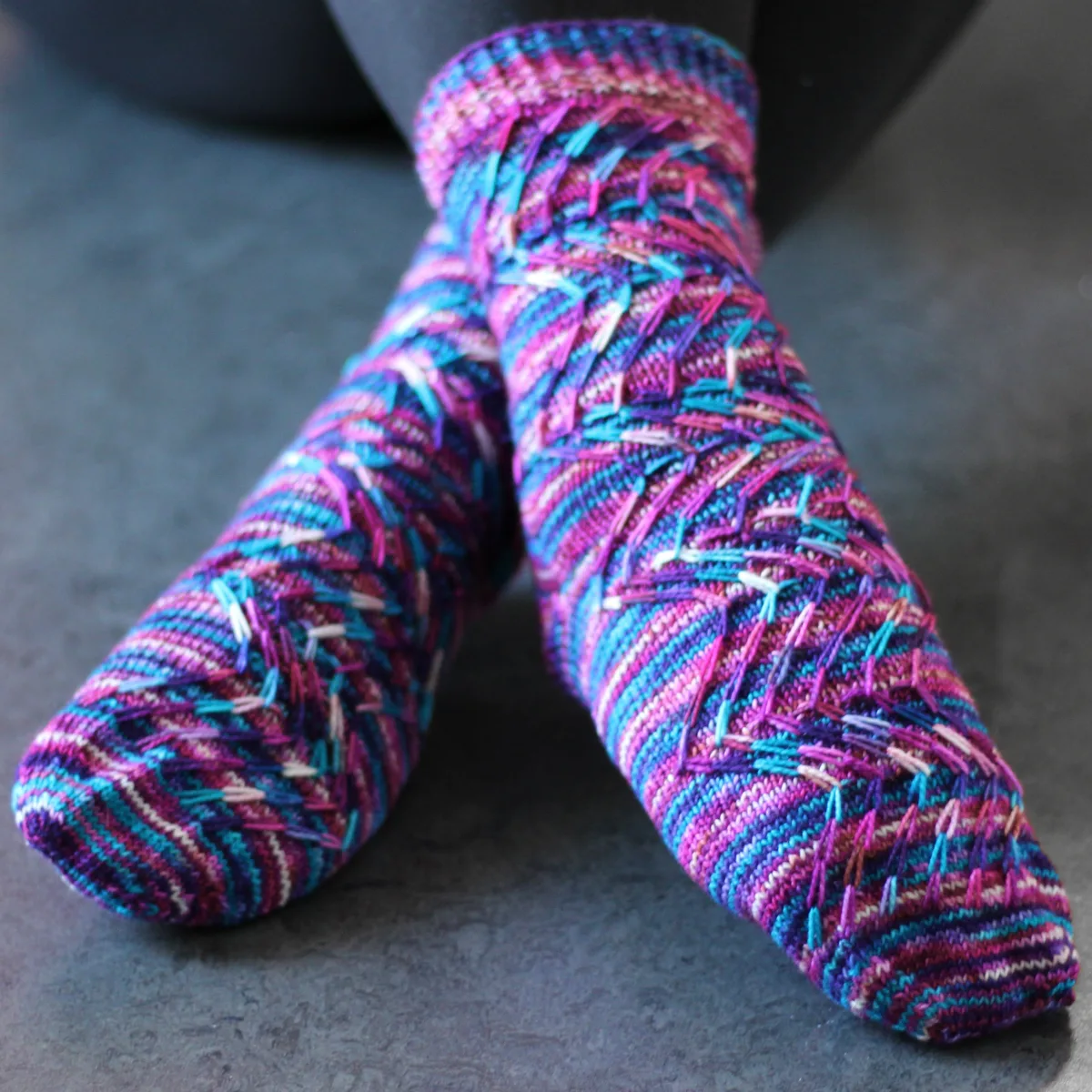
Contrast-Colour Helical Stripes And Slipped Stitches
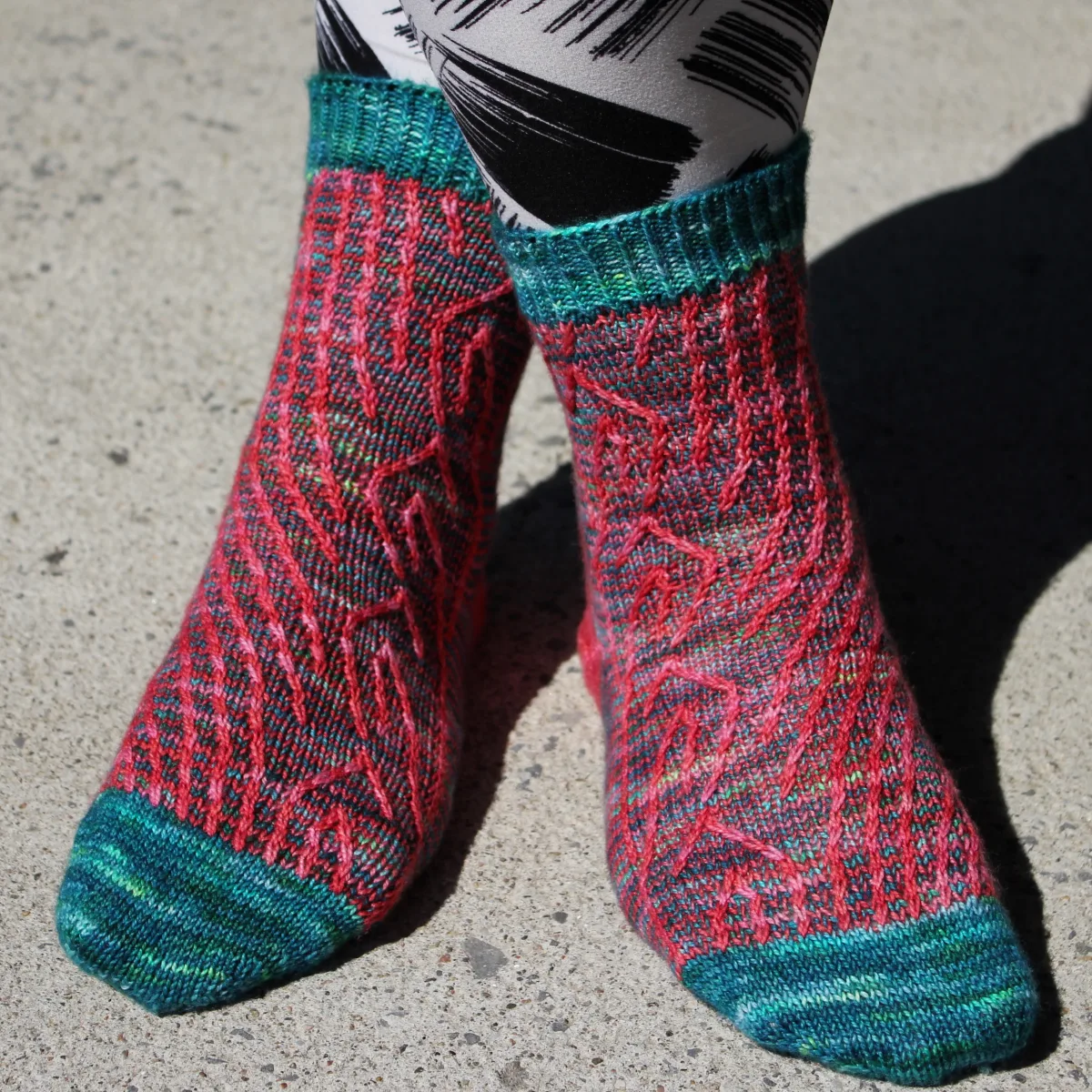
Techniques That Don't Play Well With Pooling
While you can try lots of ways to enjoy the pooling, control the pooling, or hide the pooling, the reality is that yarns that pool are always going to have some degree of colour predictability going on, because unless you're willing to cut your yarn a lot, there's no way to change the fact that it is dyed in a repeating sequence. And as humans we're very good at spotting visual patterns! That means that some kinds of knitting techniques just aren't a great fit for pooling yarns, and if you're going to pair them together anyway, you should be ready to accept that it might be difficult to see your hard work when the project is done, since intense visual pooling can easily overwhelm subtle textural details.
Generally, the more intricate a pattern is, the less likely it is that a pooling yarn is going to be a good choice for it. While you can get away with some texture patterning if it is very visually prominent, even on a busy background, that is often only the case if the pooling works in your favour. A fancy cable will show up fine if the pooling happens to keep a vertical column of a single colour over it, but if there is strong striping or thick diagonal lines running over the cables, you lose the optical illusion of twisting or braiding that knitted cables depend on with an obvious visual reminder that there are horizontal lines running through the fabric. Lace fabric can occasionally work if it is very open, as long as what shows through the openwork contrasts with the pooling yarn to help the holes show up, but you will lose a lot of the subtle details from the directional decreases in lace, especially in very intricate patterns with fewer eyelets and more texture details that depend on those subtleties to visualize the motifs. The same goes for very subtle texture patterns that depend on being clearly distinct in order to show up effectively, like pictorial knit/purl motifs on dishcloths or blanket squares.
Patterns For Speckled (And Other Non-Pooling Variegated) Yarns
Just because a pattern doesn't work well with a pooling yarn, doesn't necessarily mean it won't work with anything but a solid colour! Plenty of multicoloured yarns out there are dyed using techniques that create random-looking colourways that don't pool at all. The most common one of these is speckled yarns, which is often done by sprinkling tiny dry dye particles on yarn during the dyeing process so that they appear as widely-distributed "blips" of colour. (However, there are many ways to make random-distribution multicoloured yarns, and I am not a yarn-dyeing expert, so I can't explain how they do it. I just enjoy the end result!)
How do you know if a multicoloured yarn won't pool? Again, the only way to be sure is to swatch (and you may need a large swatch to be absolutely sure it won't pool), but you can make some educated guesses from the unwound hank. Yarn dyed in sections that go all the way through the "doughnut" of yarn (so, the inside sections are the same as the outside sections), are absolutely going to pool somehow. So if you see sections of colour on the yarn strand, but you don't see any sections that run all the way through the hank, the yarn might not pool. However, it also might have been re-skeined by the dyer — something that is intended to provide the customer with a neater and easier-to-wind hank, but that also redistributes the sections of colour so the pooling likelihood is not as obvious. If you are going to be upset by a yarn pooling on you, and it's unclear whether the distribution of colours is random or not, do take the time to swatch (remembering that while the specific pooling patterns will vary over different stitch counts, if it pools in some way at one stitch count, it will pool somehow at all other stitch counts too), or at least take the time to see if you can find swatches from the yarn company or projects by other knitters with the same yarn to see what you're working with.
In general, yarns that are a single colour with speckles on top of it do not pool. However, because of the inherent randomness of speckled yarns, sometimes you might find that the speckles are not evenly distributed from one end of the skein to the other (and so two socks look different, or one end of a scarf is more multicoloured than the other). If you're concerned about this possibility (I don't mind occasionally getting fraternal-ish socks, personally, but I know that's not everyone's cup of tea), try working in stripes with both ends of the skein, so that you get a more consistent speckle density throughout the project.
Once you know that your multicoloured yarn won't pool, what do you do? Well, that depends on the intensity of the colourway. Does the colourway have a lot of speckles, or just a few? Are there a lot of different, high-contrast colours in play, or is the colourway subtle? How much patterning — and what types of patterning — a randomly-multicoloured yarn can handle can vary based on the answers to those questions. But there are some techniques that are particularly well-suited to speckled and other randomly-multicoloured yarns, and I'll go through them below.
Let The Speckles Shine!
As with a multicoloured yarn that pools, sometimes the best strategy is to just let the yarn be the star. Stick with a plain pattern, and let the yarn do what it wants to do. Speckled yarns are partly so popular with yarn companies because they look beautiful on stockinette stitch and on garter stitch, so they work well for laid-back projects like vanilla socks and simple purling-free shawls.
If you want to show off the yarn, but you also want a little bit of patterning to keep things interesting, there are a few good possibilities. A great option for speckles is slipped stitches, especially slipped elongated stitches. They can draw out the speckles and make them more prominent in the fabric. Texture stitches that incorporate garter ridges are a good way to mix the randomly-distributed colours up in a yarn that has more subtle speckles, or that is randomly-dyed without speckles.
Choosing Patterns For Lightly-Speckled Yarns
How complex of a pattern a randomly-dyed skein of yarn can work with depends heavily on just how intense the speckles are. For subtle, lightly-speckled yarns, or ones where the speckles are low-contrast with the main colour, you can use the colourway successfully for a wide range of patterns, even ones that you might think are only for solids. They can even add a little bit of flair to fancy, intricate cables or lace without overwhelming the patterning!
You can judge the intensity of a speckled yarn with two characteristics: how many speckles there are, and how high-contrast the speckles are. In order to use a speckled yarn successfully on an intricate design, it is more likely to work if you have either a small number of speckles overall, or the speckles are low-contrast with the main colour (so, light speckles on a lighter background colour and/or the speckles are very similar colours to the main colour), or both.
You can see above that the yarn used for the cabled sock has lots of colour variation and speckles, but all the colours are yellow and green on a green background and are therefore low-contrast. They don't compete with the cables, and in fact they work with the patterning by occasionally making it into the elongated stitches to show a subtle pop of complementary colour. The lace pattern above is knitted in a yarn with higher-contrast speckles (they are much darker than the main colour), but they are infrequent enough not to interfere with the visual impact of the lace patterning. The speckles are also close to the background colour in that they are also cooler pink-to-purple colours, so there is no sudden shift away from the general look and feel of the background colour when a speckle appears in the fabric. These are just examples; it can take some trial and error to pick just the right randomly-dyed colourwway for a pattern that has a lot of details you want to show off! If you're trying to decide what to do with a yarn that is more intensely speckled, you'll want to move on to the next section.
Choosing Patterns For Heavily-Speckled Yarns
What if your speckled yarn is more wild, with a lot of high-contrast speckles, or wider, more prominent speckles, or speckles in only one section of the strand that cause them to pool? Then you might need to be more strategic about what patterns you consider for that particular yarn, and — like high-contrast pooling yarns — consider avoiding the delicate, subtle, and intricate options.
There are still some great options for techniques that work with this category of wild yarns, however! Slipped stitches, especially elongated stitches that form a visually prominent motif, can still show up on a background that is very busy. Texture that incorporates long purl ridges can help blend the colours together; however, while more subtle knit/purl patterns with more purl "dots" than ridges (such as seed stitch) will also change the look of the fabric, the small texture details might get lost in the noise.
Like with a busy variegated yarn, sometimes the right way to tone down a colourway like this is to add a solid somehow, either one that blends in, or one that stands out as a contrast, depending on what you'd like to achieve. Using a very busy speckled yarn as a background for contrast-colour stranded or slipped-stitch colourwork can work really well, as can working in narrow stripes with a contrast colour that blends in, to help calm down the intensity of the visual chaos.
Techniques That Don't Play Well With Speckles
While you can try lots of ways to enjoy a yarn with random colour patterning, and they often offer more flexibility than pooling yarns, there are some techniques that don't really produce a significant visual impact in a speckled yarn. (Though maybe that's something you want sometimes!) The first one is short rows. Short-row patterning is very often a structural element, used for things like sock heel turns and sweater shaping. When it's intended to have a visual effect, however, you won't notice it in a randomly-coloured yarn like you will in a pooling yarn.
A second technique that isn't ideal for randomly-dyed yarn colourways is bias knitting. Without also doing some kind of additional visual information to accent the angled fabric more clearly (like garter ridges or stripes of a contrast colour), a speckled yarn on its own won't make that diagonal line obvious; bias stockinette stitch in a speckled yarn will look very much the same as plain stockinette. Very subtle knit/purl texture stitches also might get obscured by speckles (especially heavily-speckled yarns), so if you're hoping to use texture to write a word or make a picture, the results will be clearer if you use something solid.
Finally, you need to be thoughtful about doing colourwork patterning (stranded or slipped-stitch patterning especially) with a speckled yarn. If your other colour blends in with your speckled yarn, even just occasionally, stranded colourwork will lose its sharpness significantly, especially if the motif has subtle details that are only one or two stitches wide. Even if all their colours contrast well with the main colour, the chaotic changes in colour, especially in a heavily-speckled yarn, can make details difficult to pick out visually in any kind of colourwork. It pays to swatch the motif if you're not sure whether or not it will work, then look at the result from a distance to see if you're actually getting the look you want.
Better Without Speckles: Intricate Multiple-Yarn Colourwork

Better Without Speckles: Stranded Colourwork With Small Details

All that said, you are the boss of your yarn, and you should use yarns you love to make patterns you love! Ultimately, you are the person who needs to enjoy your knitting and your finished product, and if you are happy, that's what's most important in the end. There are no "knitting police" and you don't have to follow any of the advice above, if you don't want to. In creative pursuits, "rules" are made to be broken! (Trust me, I do it all the time! I pair pictorial colourwork with busy self-striping yarn, put horizontal stripes on top of bias fabric, and work subtle texture with pooling yarns. The jury is out on whether my yarn pairings always work out well, but my attitude is: what is the point of designing if you never take any risks?)
Be sure to support indie dyers, if you can! It enriches the whole fibre arts world to have a wide range of colour experts out there producing unique and beautiful yarn for crafters to enjoy, and I hope this article made you feel more confident about putting an impulse-buy wild yarn to good use in a way that will make you happy. Looking to go shopping and need indie yarn recommendations? There is a recommended yarn for every pattern I design on the pattern pages on this website, whether that is the original sample yarn or (if it is unavailable) a very compatible subtitute, and the vast majority are indie dyers. Do consider checking them out!






